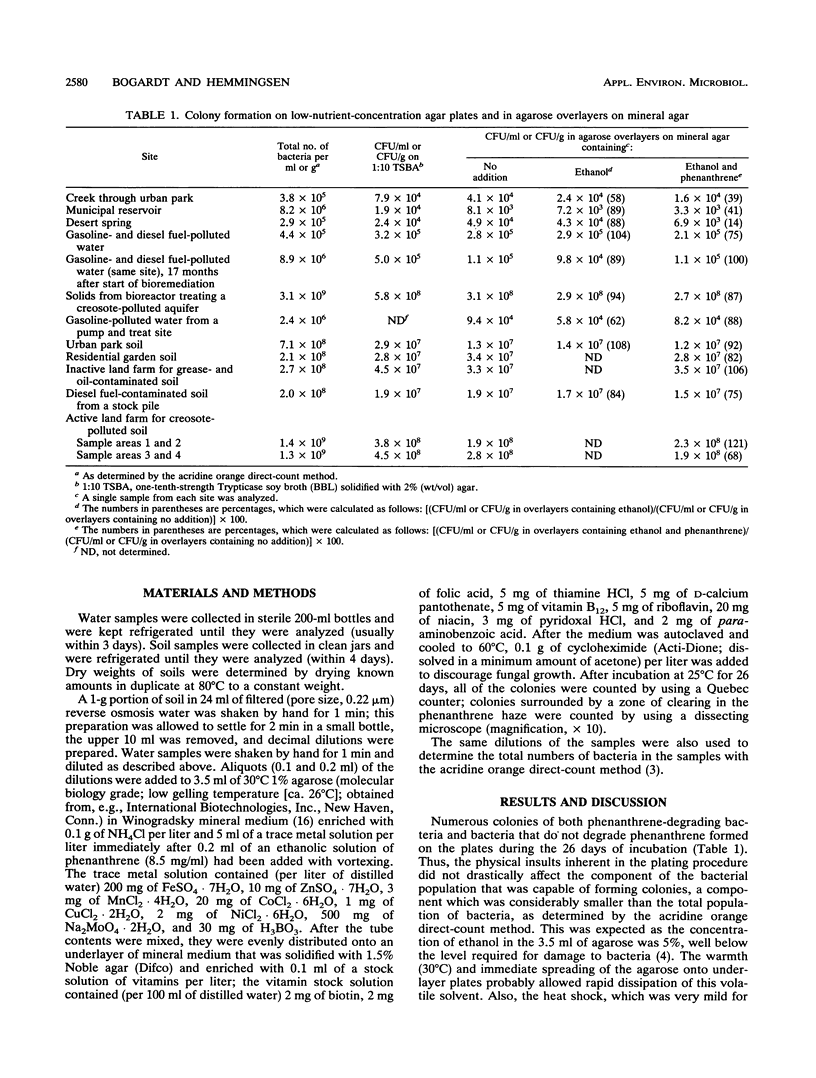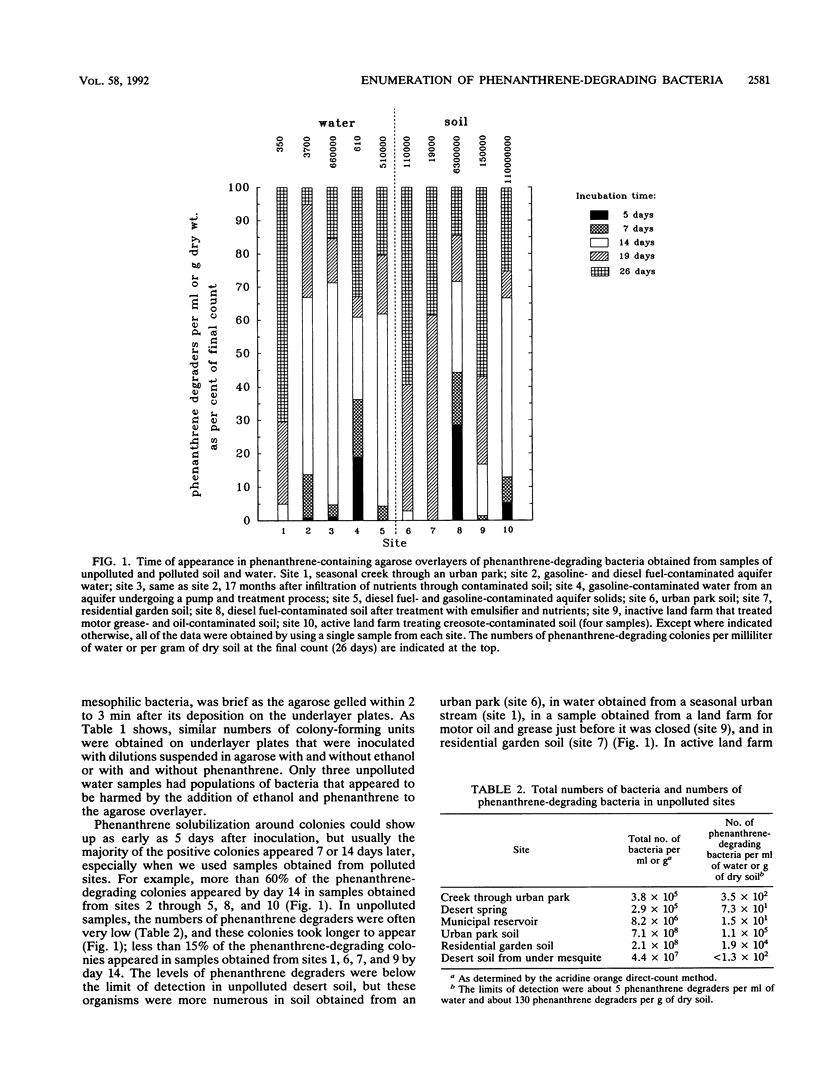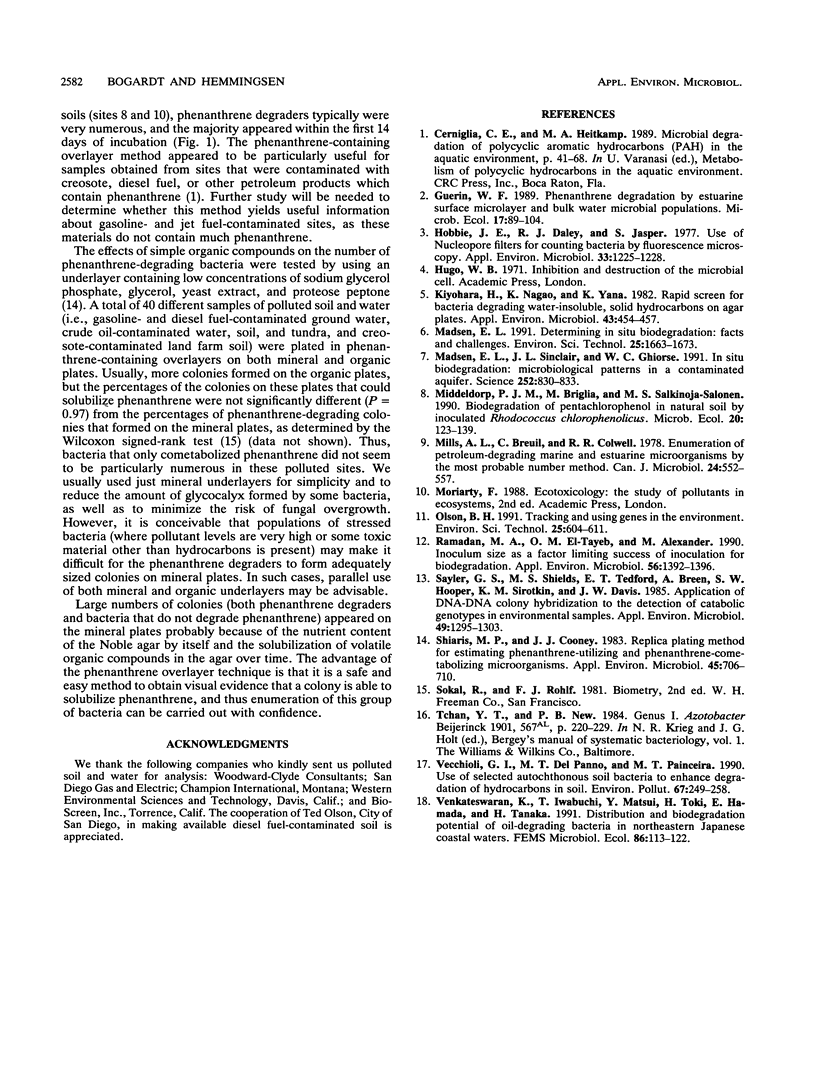Abstract
Bacteria that are capable of degrading polycyclic aromatic hydrocarbons were enumerated by incorporating soil and water dilutions together with fine particles of phenanthrene, a polycyclic aromatic hydrocarbon, into an agarose overlayer and pouring the mixture over a mineral salts underlayer. The phenanthrene-degrading bacteria embedded in the overlayer were recognized by a halo of clearing in the opaque phenanthrene layer. Diesel fuel- or creosote-contaminated soil and water that were undergoing bioremediation contained 6 x 10(6) to 100 x 10(6) phenanthrene-degrading bacteria per g and ca. 5 x 10(5) phenanthrene-degrading bacteria per ml, respectively, whereas samples from untreated polluted sites contained substantially lower numbers. Unpolluted soil and water contained no detectable phenanthrene degraders (desert soil) or only very modest numbers of these organisms (garden soil, municipal reservoir water).
Full text
PDF



Selected References
These references are in PubMed. This may not be the complete list of references from this article.
- Hobbie J. E., Daley R. J., Jasper S. Use of nuclepore filters for counting bacteria by fluorescence microscopy. Appl Environ Microbiol. 1977 May;33(5):1225–1228. doi: 10.1128/aem.33.5.1225-1228.1977. [DOI] [PMC free article] [PubMed] [Google Scholar]
- Kiyohara H., Nagao K., Yana K. Rapid screen for bacteria degrading water-insoluble, solid hydrocarbons on agar plates. Appl Environ Microbiol. 1982 Feb;43(2):454–457. doi: 10.1128/aem.43.2.454-457.1982. [DOI] [PMC free article] [PubMed] [Google Scholar]
- Madsen E. L., Sinclair J. L., Ghiorse W. C. In situ biodegradation: microbiological patterns in a contaminated aquifer. Science. 1991 May 10;252(5007):830–833. doi: 10.1126/science.2028258. [DOI] [PubMed] [Google Scholar]
- Ramadan M. A., el-Tayeb O. M., Alexander M. Inoculum size as a factor limiting success of inoculation for biodegradation. Appl Environ Microbiol. 1990 May;56(5):1392–1396. doi: 10.1128/aem.56.5.1392-1396.1990. [DOI] [PMC free article] [PubMed] [Google Scholar]
- Sayler G. S., Shields M. S., Tedford E. T., Breen A., Hooper S. W., Sirotkin K. M., Davis J. W. Application of DNA-DNA colony hybridization to the detection of catabolic genotypes in environmental samples. Appl Environ Microbiol. 1985 May;49(5):1295–1303. doi: 10.1128/aem.49.5.1295-1303.1985. [DOI] [PMC free article] [PubMed] [Google Scholar]
- Shiaris M. P., Cooney J. J. Replica plating method for estimating phenanthrene-utilizing and phenanthrene-cometabolizing microorganisms. Appl Environ Microbiol. 1983 Feb;45(2):706–710. doi: 10.1128/aem.45.2.706-710.1983. [DOI] [PMC free article] [PubMed] [Google Scholar]
- Vecchioli G. I., Del Panno M. T., Painceira M. T. Use of selected autochthonous soil bacteria to enhanced degradation of hydrocarbons in soil. Environ Pollut. 1990;67(3):249–258. doi: 10.1016/0269-7491(90)90190-n. [DOI] [PubMed] [Google Scholar]


